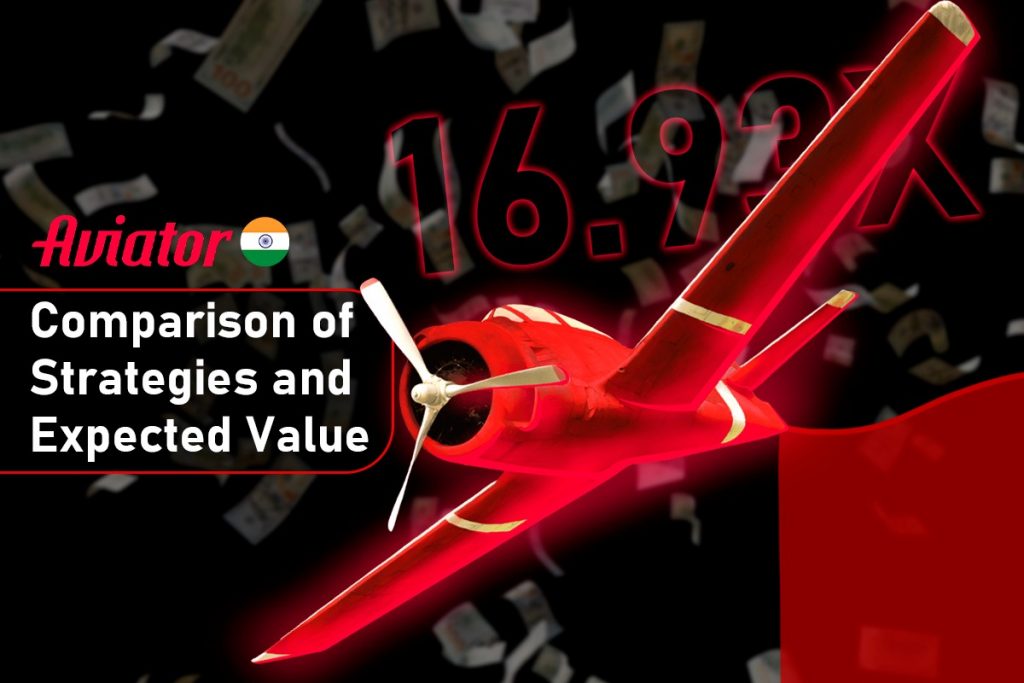The first prototype of the game with ‘crash mechanics’, on which Aviator is based, appeared in 2014 in South Korea as an experiment in modelling ‘crowd behaviour’. Players watched the odds grow and decided when to collect their money before the ‘crash’. Today, Aviator betting is one of the most popular games in India: according to AppBrain, more than 70% of installations are on mobile devices.
The main question remains the same: how to choose a strategy: play cautiously or aim for the maximum win?
How Aviator Works and the Essence of Risk
To understand the difference between strategies, it is important to understand how the odds are formed. Each round in Aviator starts with a coefficient of 1.00x, which begins to grow in real time. At any moment, the player can press Cash Out and fix the winnings multiplied by the current coefficient. But if the plane ‘flies away,’ the round ends and the bet is lost.
The coefficient is determined by a pseudo-random generator, and each ‘crash’ is independent. However, according to statistics, the average multiplier ranges from 1.8x to 2.2x, and once every 50-60 rounds there is an ‘explosive’ multiplier of 50x and above. Both strategies are based on this:
- Low risk — take your winnings early, avoiding crashes.
- High risk — wait for high coefficients, knowing that some of your bets will burn.
Thus, risk is not just a level of excitement, but a mathematical characteristic: the higher the average multiplier you are aiming for, the less likely you are to get it.
Low Risk Strategy — Stability and Control
Low risk play is suitable for those who want to maintain their balance longer and minimise drawdowns. The main idea is to take your winnings at a low odds, usually between 1.20x and 1.50x.
The advantages of this strategy are obvious:
- low volatility — losses are rare;
- smooth balance growth over time;
- easy to implement even on mobile devices.
Example: a player bets 100 INR and cashes out at odds of 1.35x. The average win in the Aviator game will be 35 INR, but a loss only occurs if the plane flies away instantly, which happens in 3-5% of cases.
Some players use automatic cash-out, a feature that locks in winnings at a set multiplier without human intervention. This helps to avoid emotional decisions, especially during long sessions.
For Indian users with deposits via UPI, Paytm or PhonePe, this strategy is convenient: frequent small wins allow you to withdraw funds faster without exceeding transaction limits.
However, the main disadvantage of Low risk is its limited profit potential. Even if a player wins 10 times in a row, the total balance increase will be less than one successful round with a high multiplier.
High Risk Strategy — Potential and Pressure
High risk play is based on rare but large wins. Here, the player consciously accepts a high chance of losing, expecting that one successful bet will compensate for a series of failures. The goal is to catch a multiplier of 20x, 50x or even 100x.
Key features of this approach:
- long waiting periods between big wins;
- high demands on discipline and bankroll limits;
- emotional stress — several losses in a row can lead to impulsive decisions.
Example: a player makes 10 bets of INR 100 each, waiting for odds above 20x. Nine bets lose, but on the tenth, he manages to get 20x. The balance evens out, but it requires patience and strict self-control.
Players who prefer high risk often combine bets — for example, they place two parallel bets: one at 1.40x (guaranteed return), the second at 25x. Thus, part of the risk is compensated in advance, but the chance of a ‘jackpot’ remains.
The main problem with this strategy is the influence of the human factor. After several unsuccessful rounds, the desire to ‘win back’ appears, and the player increases the bet amount, breaking discipline. Without limits, high risk quickly turns from a strategy into chaos.
Comparison of Strategies and Expected Value

To objectively compare strategies, we need to consider the expected value (EV) — the average profit per bet.
With a fixed cash-out of 1.35x, the chance of winning is approximately 95%. EV = (0.95 × 1.35) – (0.05 × 1.0) = +0.23, i.e. 23% expected growth per bet under ideal conditions.
For High risk with a coefficient of 20x, the probability of success is about 4%. EV = (0.04 × 20) – (0.96 × 1.0) = –0.16, i.e. a negative expected value.
In practice, both strategies give different results depending on the length of the session. Low risk wins in the long run if discipline is maintained. High risk only works with a limited number of attempts and a sufficient balance reserve.
How to Choose a Strategy and Manage Risk
The choice between low and high risk depends on your playing profile, balance and goals. There are three basic rules for playing Aviator India:
- Set a loss limit. For low risk, no more than 5% of your bankroll per session; for high risk, no more than 10%.
- Play in series. Divide your balance into equal parts and test both strategies over short distances (for example, 20 rounds each).
- Keep your emotions in check. With high risk, it is important to take breaks: several unsuccessful attempts in a row do not mean that ‘next time you will definitely be lucky’.
If your goal is stability and control, choose low risk. If you are ready to take risks for the sake of strong emotions and rare big wins, you can experiment with high risk, but only within a pre-set limit.
In India, most players combine both approaches: during the day, they use a low-risk strategy for slow growth, and in the evening, when they want excitement, they switch to high risk.
Read also JeetBuzz interface overview: how to start betting and playing
Beamer
Related posts
Recent Posts
Site navigation
Main Partners
Download Melbet app for Android & iOS free and claim bonus BDT 10,000
Best Online Casino
Join Betvisa casino today and grab 100% Bonus up to ৳20,000
Start play at 1xbet casino https://1xbetonline.in/ and get bonus up to ₹126,000 + 150 Free Spins.
Visit BC Games and immerse yourself in a world of many games. New players get a 300% bonus on their first deposit!

